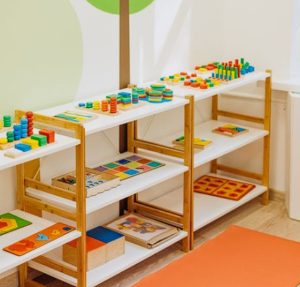Unlock the Secrets of Smart Toy Sourcing
Toy sourcing is a process of finding and securing products from suppliers to meet the needs of toy stores. It involves researching trends in the toy market, identifying potential sources, evaluating their ability to provide quality products at competitive prices, and negotiating terms. The success of a toy business depends heavily on successful sourcing strategies. Toy sourcing requires careful planning and execution to ensure that toys are sourced from reliable manufacturers with adequate quality assurance measures in place. This introduction will give an overview of the process involved in toy sourcing, as well as discuss some important factors that need to be taken into consideration when carrying out this task.
Researching Toy Manufacturers
Toy sourcing is an important step that requires careful consideration of the needs and wants of both the buyer and the supplier. Finding the best toy manufacturer for your new product can be a daunting task. With the rise of 3D printing, there are now countless options to choose from. It is important to take time researching toy manufacturers before making a decision about which one to use for your project. Here are some tips on how you can find the right company for your needs:
- Identify Your Needs: Before contacting any potential manufacturers, decide what type of toys you want and what material they should be made out of. This will help narrow down your search and make it easier to find companies that specialize in the type of toys you need.
- Research Companies Online: The Internet is a great resource when searching for manufacturers; look up reviews and customer feedback on different companies to get an idea of their quality and service levels before committing to one particular provider. Additionally, many companies have websites with detailed information about their services, so read over these carefully before making any decisions or reaching out with questions or inquiries.
- Compare Prices & Services: Contact several potential suppliers and compare prices as well as services offered by each company—this will help you determine who offers the best value overall based on cost versus quality of materials used or other features like custom design capabilities.
Choosing a Manufacturer
Choosing a manufacturer is one of the most important decisions you will make when it comes to launching, expanding or changing your product line. Your choice of manufacturer can have a significant impact on the success of your business and choosing the right one for your needs is essential. Here are some tips to help you make an informed decision when choosing a manufacturer:
- Research Potential Manufacturers: Before committing to any particular manufacturer, take time to research potential ones thoroughly. Look into their background and experience in manufacturing products similar to yours, as well as any relevant certifications or awards they may have received in that area. Also consider their production capabilities, pricing structure, quality control methods and customer service policies before making a decision.
- Ask for References: Ask potential manufacturers for references from customers who have used their services recently – this will give you an idea of how satisfied other customers are with the services provided by them. You should also contact these references directly and ask about their experiences working with the company in question – this can provide valuable insight into how reliable they would be as a partner for your business needs.
- Review Their Policies: Ensure that you understand all of the policies associated with working with each potential manufacturing partner – from payment terms and delivery timelines.
Negotiating Terms and Pricing
Negotiating terms and pricing can be a difficult process to navigate, especially when it comes to making sure you get the best deal. Whether you’re bargaining for a higher salary or simply trying to haggle a lower price on an item, certain strategies will help ensure your success.
First and foremost, preparation is key. Before entering into negotiations, make sure you know exactly what you want and how much of it you’re willing to accept. Research the market rate for whatever it is that you’re purchasing or selling so that when the time comes to negotiate terms and pricing, you have a good idea of what is expected to come away with a favorable deal.
It also helps if you can create some form of leverage before beginning negotiations; this could mean having multiple offers from competing providers or being able to walk away from the table if necessary. Having options gives you more power in negotiations and makes it easier for both parties involved to reach an agreeable solution since neither side wants the conversation stalled due to its lack of flexibility.
When negotiating terms and pricing, don’t be afraid to ask questions about each detail included in the agreement so that both parties understand exactly what they are agreeing upon.
Quality Control and Testing
Quality control and testing are essential components of any successful business. It helps to ensure that products and services meet the standards set by the company, as well as providing a safeguard against customer complaints or product recalls. Quality control is an important part of the production process, and companies need to have rigorous quality control measures in place.
Quality control involves inspecting, testing and measuring products during production to make sure they meet requirements. This can be done either manually or through automated systems, but it always involves checking that products are made following specifications. Quality assurance is also part of this process; it focuses on ensuring that processes are standardized so that each product meets specifications consistently over time.
Testing is often a crucial part of quality assurance and control. Tests can be used to measure performance characteristics such as strength, durability or electrical resistance; they can also be used to verify compliance with industry standards or regulations such as safety protocols or environmental standards. Testing may involve laboratory experiments, simulations or field tests depending on the product being tested; results should always be documented for later reference in case of discrepancies between what was expected and what happened during production.
Shipping and Delivering Toys to Customers
As the holiday season nears, children’s toy stores across the country are ramping up their shipping and delivery efforts to accommodate an influx of customers. Shipping and delivering toys to customers is a complex process that requires careful planning, coordination between multiple parties, and a reliable system for tracking orders. To ensure that customers receive their toys on time and in perfect condition, toy stores must take these four steps when shipping and delivering goods.
First, they must select the right carrier for each order. Toy stores should consider factors such as cost efficiency, speed of delivery, package size restrictions, customer service ratings etc. when selecting a carrier. It’s also important to choose carriers that offer flexible return policies in case of any issues with delivery or damaged items.
Second, toy stores should create an efficient packaging system for shipments. This involves using sturdy boxes that can protect fragile items from damage during transit as well as ensuring the correct weight limit per package so that there are no delays at customs or other checkpoints due to overweight packages.
Thirdly, it’s important to have a reliable tracking system in place so that customers can track their orders easily while they wait for their packages to arrive. This helps build essential customer trust.
Conclusion
Toy sourcing can be a complex and costly process, but it is a critical part of the toy industry. By understanding the unique needs and requirements of different suppliers, manufacturers can ensure that they are sourcing the best quality toys from reliable sources. This will help them to maintain their reputation for providing high-quality products to their customers. With careful planning, research, and negotiation, companies can find the right vendors that offer quality toys at competitive prices while meeting customer demands.





